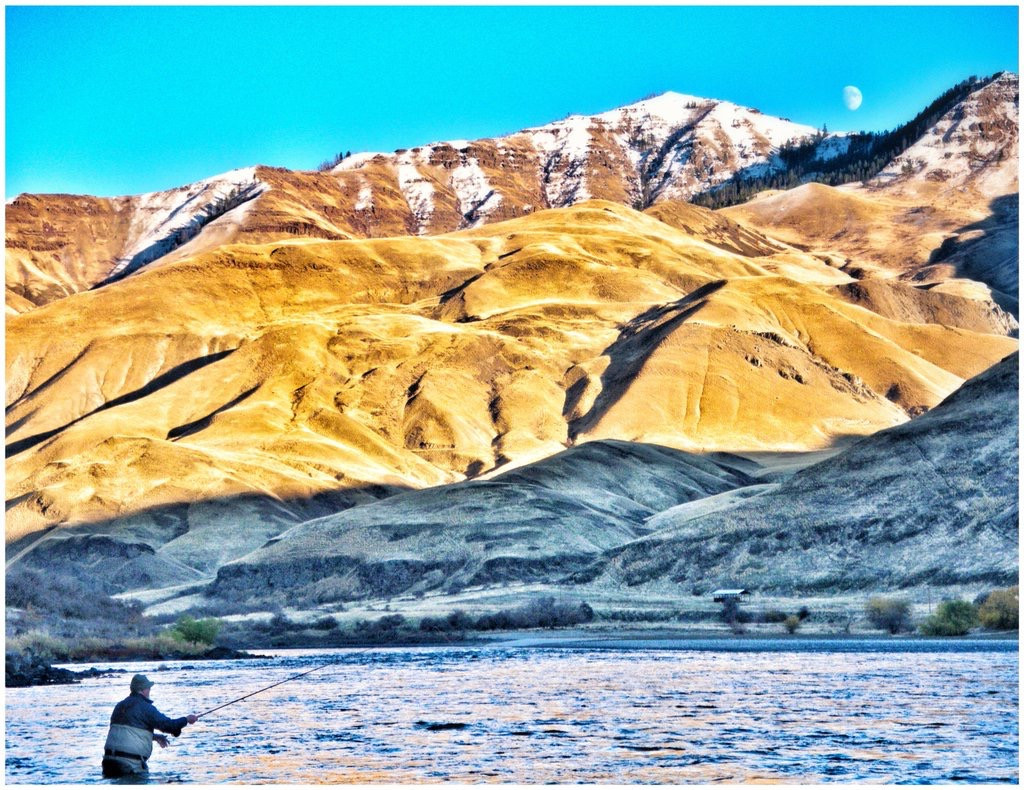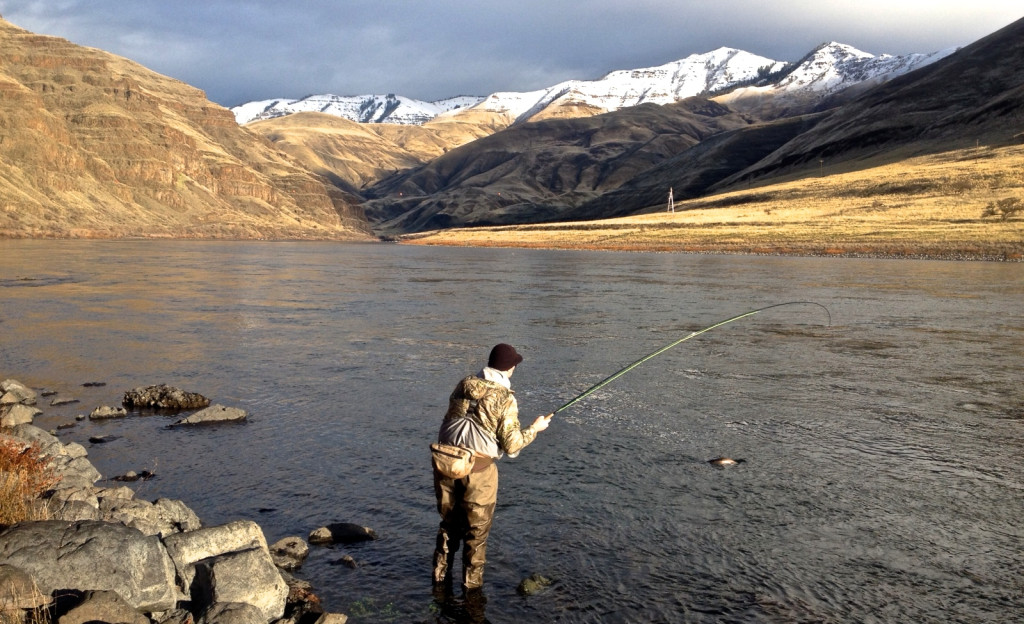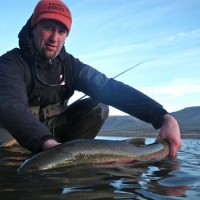When you first see the river as you drop down the Lewiston grade, it looks like any other piece of flat water created by dams. Its placid, lifeless waters wrap around the towns of Lewiston and Clarkston. When you’re there, you’re always aware of it.
Start moving up the Snake, separating from the so-called “inland seaport” that was once envisioned, you glide by another eight miles through the town of Asotin and finally a magical transformation happens…
The Snake River becomes a river again. Runs, riffles, rapids and everything you associate with a free flowing river appear. White sand beaches, boulder gardens, massive tail-outs, and gravel bars permeate every bend and stretch of this legendary river.
It’s a beautiful sight. And fishing this section of this great river is nothing short of amazing. It’s what the Snake River was, is, and could be in its entirety if the four infamous dams that choke this stretch of river come down.
It’s a miracle that wild Chinook, sockeye and steelhead still return in any numbers to the tributaries of the Snake River when you consider the obstacles these fish must overcome – most daunting of which is the gauntlet of dams man has thrown in their path. Imagining how these fish can pass through these long stretches of slow moving water and find their way home to the Grande Ronde, Clearwater or Salmon rivers can only create a deep reverence for these fish.
Take Action Today to Free the Snake
We’ve done just about all we can to beat them into the ground and yet these fish still keep coming back. And they don’t return alone. With them comes the cultural, economic and recreational benefits that healthy returns of wild fish and healthy rivers provide – benefits that are essential components of quality of life in the Northwest. And benefits that would certainly be magnified if salmon and steelhead runs were recovered to even a modest percentage of their historic greatness.
Fortunately, we have a once-in-a-generation opportunity to make that happen. We have the opportunity to undertake the largest river and fish restoration project in history. We have the opportunity to Free the Snake.

Currently, federal agencies are taking public input on options for recovering wild fish in the Columbia River Watershed. On the table is the option to remove the four lower Snake River dams – Ice Harbor, Lower Monumental, Little Goose and finally, Lower Granite.
Such action may sound radical, but the benefits envisioned for these structures decades ago have not come to fruition while the costs continue to mount. Negative population growth in the Lewiston-Clarkston Valley, billions of dollars spent on ineffective salmon and steelhead mitigation efforts, significant downturns in container and barge traffic from the port of Lewiston with railways plentiful.
After kicking the can down the road for nearly two decades, federal judges have forced the Army Corps of Engineers, power companies and other agencies involved to put the idea of breaching the four lower Snake River dams back on the table as a tactic for recovering wild salmon and steelhead in the Columbia/Snake Watershed. Until the 8th of December, the public is invited to give their input on the issue of removing these deadbeat dams through online public comments and a series of public meetings across the watershed.
The irony of all of this is that in 2002, the Army Corps of Engineers conducted a study that spent $33 million taxpayer dollars and took seven years to complete that recommended the dams be taken out to support recovery of endangered wild fish. What are we continuing to look for? The answer continues to become more evident.
We’re facing some serious issues. Over 90 percent of Snake River sockeye died in river due to hot water temperatures in 2015. This year we are missing about 100,000 Columbia River summer A run steelhead bound for Snake River tributaries, a fish that draws anglers and dollars from around the world and contributes a lion’s share of angling opportunity in the Inland Northwest. We’re spending hundreds of millions of dollars each year on fish mitigation with no relief in sight, and we’re running out of time.
I try to envision what it would be like if these dams were breached. Hundreds of miles of reclaimed river. A revitalized L-C Valley. Hundreds of millions of taxpayer dollars saved annually. Improved rail systems for farmers to deliver their goods to market. New recreational draws for rafting and boating, and the tourism and outfitter dollars that come with them.
And the fish. Removal of the four lower Snake River dams means access to some of the best habitat in the world with four less massive structures blocking their way. Less stress, happier fish, more fish, more places to fish, and everything that healthy runs mean to the economy, environment and the hearts and minds of the region.
Cradle a wild summer run steelhead that just took you on a ride up and down the banks of the Snake, and I challenge you to not support anything that gives these fish a better chance. Go ahead and try. It’s impossible.
Lets take the straw off the camel’s breaking back and give these wild fish a real shot at recovery. As angler’s we have a unique responsibility for these fish and an important stake in this process. Now is the time to speak up for removal of the four obsolete dams on the Lower Snake.
Participation in these public meetings is an opportunity of a lifetime. If you can’t be there in person, submit a comment today. This is an opportunity we can’t afford to miss. Now is the time to free the Snake.
Josh Mills grew up in Spokane, Washington and has always made fishing and hunting a focal point of his life. In addition to selling advertising for a group or radio stations, Josh runs the fly fishing blog Chucking Line and Chasing Tail and is an active board member of the Wild Steelhead Coalition.









Excellent job, Josh! I will be at the Boise open house to represent the fish and common sense!